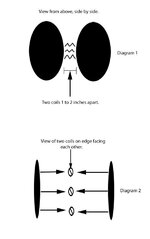I am very new to this.
If a PI Detector and a VLF Detector are placed beside each other will the frequencies from them clash?
Or are their frequenies so different they will not effect each other?
From some of the research I have done a PI Detector is better for hunting metal and a VLF Detector is better for hunting meteorites.
I want to know if I can use both types of detectors at the same time and even make a handle to hold both at the same time.
If a PI Detector and a VLF Detector are placed beside each other will the frequencies from them clash?
Or are their frequenies so different they will not effect each other?
From some of the research I have done a PI Detector is better for hunting metal and a VLF Detector is better for hunting meteorites.
I want to know if I can use both types of detectors at the same time and even make a handle to hold both at the same time.
Amazon Forum Fav 👍
Last edited:







